Interviewsand Articles
Editor's Introduction w & c #8: Objects of Presence
by Richard Whittaker, Feb 14, 2017

Cup, ceramic, 2003, Ehren Tool
Our theme, “Objects of Presence,” comes from an experience of looking at Ursula von Rydingsvard’s work. It could just as easily have been, “Objects of power” —especially in relation to her large, epically large, bowls.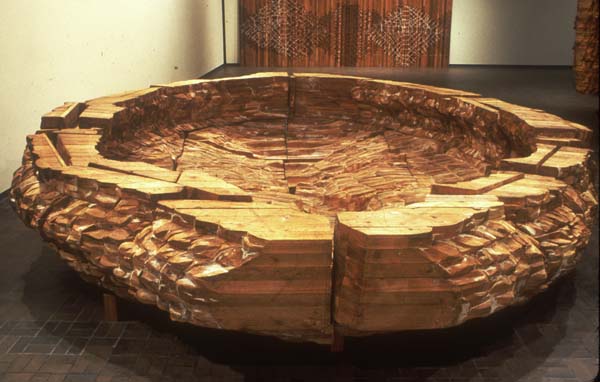 As I was looking at her work, I was trying to understand my response. What was I seeing? What was this work saying? And why was I having such a hard time finding words around these questions? After a while it became clear that my response was entirely visceral. No doubt most visual art touches us first in a non-verbal way, but I don’t usually find myself in a twist about it. But this work was having that effect—probably because it’s powerful. Von Rydingsvard’s work has presence.
As I was looking at her work, I was trying to understand my response. What was I seeing? What was this work saying? And why was I having such a hard time finding words around these questions? After a while it became clear that my response was entirely visceral. No doubt most visual art touches us first in a non-verbal way, but I don’t usually find myself in a twist about it. But this work was having that effect—probably because it’s powerful. Von Rydingsvard’s work has presence.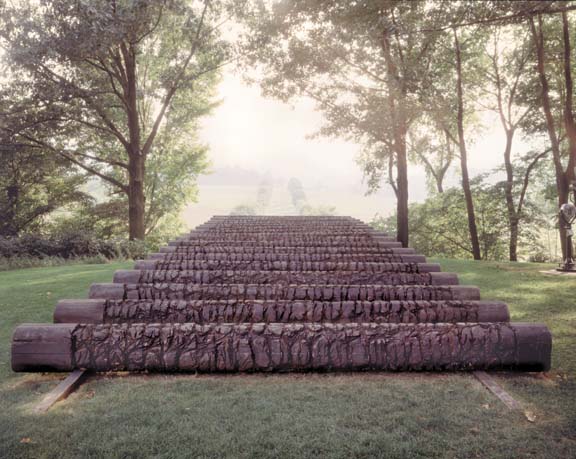
When the word “presence” came to me, it resonated. In a way, we all know what presence means, yet it’s hard to say exactly what that is.
Contributing editor Jane Rosen made my interview with von Rydingsvard possible. And Ann Hatch helped, too. Hatch became friends with Rydingsvard when the artist was given a residency at Hatch’s Capp Street Project in 1989. In November of 2003 von Rydingsvard visited SF to give a talk at the San Francisco Art Institute and the next day I met her at Ann Hatch’s home where we talked.
Then, a couple of days later, Ann and I had an extended conversation. Those who know how much Hatch has done, and contnues to do, for art in the Bay Area will especially enjoy it.
Our theme also applies to several other works in this issue in differing degrees and ways. Annabeth Rosen’s ceramic sculpture is on a much smaller scale than von Rydingsvard does, but is prolific. A visit to her studio makes a stunning impression. Her work seems to spill out as if from some kind of organic cornucopia.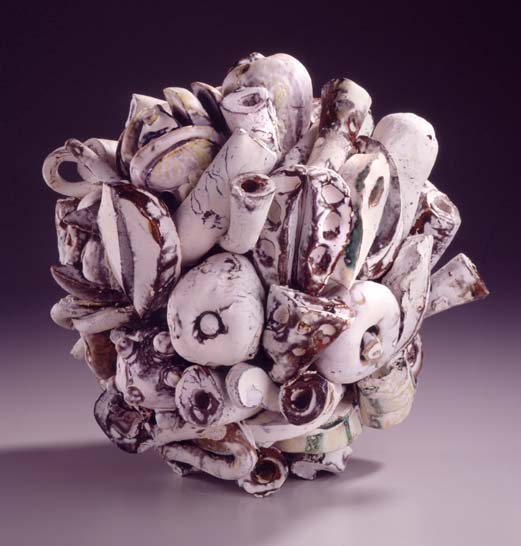
U. S. Marine veteran of Operation Desert Storm, Ehren Tool’s ceramic cups are a different matter altogether. Each has a military theme. Tool gave me five—he gives them away. He’s given thousands away [over 21,000 as of May 2019]. In looking at his cups, it’s not clear what the message is. Some are quite beautiful in a sinister way. Later, at home, I picked up one of his cups to get a drink of water. I filled it, but when I brought it close to my lips something unexpected happened. I couldn’t drink out of it. Then I got it. Tool’s cups are powerful in a hidden way. He simply calls himself a “war awareness artist.” He wants people to be aware that war is real. It's brutal, a horror.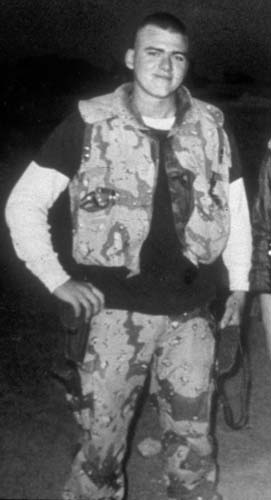
In this issue we also focus on a work of public art carried to fruition against all odds by architect Carlo Ferretti— a work of poetry and presence. The story of its completion is remarkable in its strange irony and pathos..jpg)
Weeds are not objects of presence, unless they appear in your carefully tended lawn, your garden, or when they’re choking out a crop. Otherwise, they’re pretty much ignored. But either way, are they ever really seen? 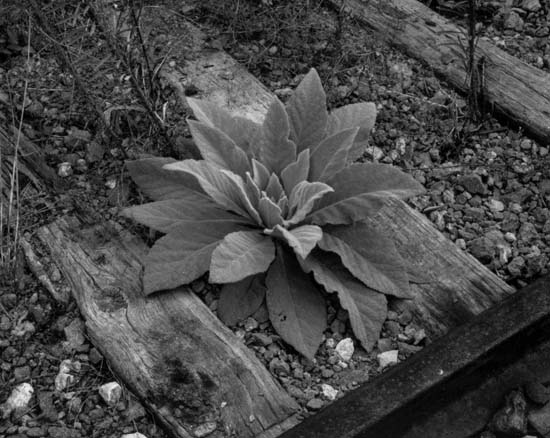
I think you'll enjoy our interview with Doug Burgess who brings a thoughtful, probing eye to the plants we call weeds.
And there are things of which it can be asked, are they things at all? I’ll leave it to readers to explore the rest of our issue with its surprises. And of course, we have Indigo Animal’s on-going adventure on many levels at The Lawn Statuary Institute.
—Welcome.
About the Author
Richard Whittaker is the founding editor of works & conversations and West Coast editor of Parabola magazine.
SUBSCRIBE NOW
TO OUR MONTHLY NEWSLETTER









Share Your Comments and Reflections on this Conversation: